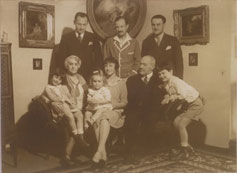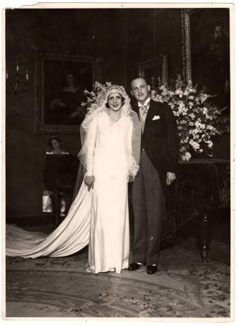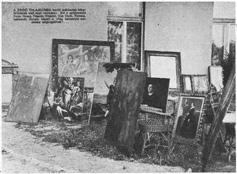For Any Inquries
Please contact:
Alycia Regan Benenati
Kasowitz Benson Torres LLP
1633 Broadway
New York, New York 10019
Tel. (212) 506-1975
Fax. (212) 500-3475
ABenenati@kasowitz.com
Family History
Baron Mór Lipót Herzog (1869-1934) was a passionate Jewish art collector in pre-war Hungary. Over his lifetime, he assembled the Herzog Collection, one of Europe’s great private collections of art and the largest in Hungary.
In 1920, Baron Herzog gave his daughter Erzsébet in marriage to Alfonz Weiss de Csepel (pronounced “de CHEP’-el”), the son of the Baron Manfred Weiss de Csepel (née Manfred Weiss), at the time Hungary’s leading industrialist, whose conglomerate included the Manfred Weiss Works, the largest machine factory in Hungary, with its main plant on the island of Csepel, extending south from Budapest on the Danube. The factory produced canned foods, agricultural machinery and other metal products for distribution throughout the world, employing some 100,000 workers. In recognition of his contributions to the Hungarian economy and society, Hungary’s emperor had named him the Baron Manfred Weiss of Csepel, thus converting his surname to “de Csepel,” or “Csepeli” in Hungarian.
After Baron Herzog died in 1934, the collection remained intact with his wife, the Baroness, until her death in 1940. After her death, their three children, Erzsébet (Elizabeth), István (Steven) and András (Andrew), divided the collection among them, intending to continue their father’s legacy as a patron of the arts.
In 1942, the Hungarian authorities sent András Herzog into a Hungarian forced labor camp for Jews, where he perished in 1943. Both of his daughters immediately fled the country to South America and settled in Italy after World War II. His daughters are plaintiffs in the litigation.
When Germany invaded Hungary in 1944, the Third Reich dispatched the notorious Adolf Eichmann to Hungary to direct the annihilation of the Jews of Hungary, and the systematic plunder of their cultural treasures. During this period, the Nazis requisitioned the family’s companies, halting civilian industrial production and turning the factories into manufacturers of guns, tanks, airplanes and other killing machines for the Nazi forces. They also forced the surviving brother, István Herzog, onto a train bound for a death camp, but he escaped and kept in hiding until the war ended.
Stripped of their art and property and fearing for their lives, the other members of the Herzog family were forced to flee Hungary or face extermination. In May 1944, Erzsébet and her children, together with other members of the Weiss de Csepel family, departed. They were required to leave Alfonz and four other family members behind as hostages. Erzsébet and her children eventually emigrated to the USA. After the war ended, Alfonz reunited with his wife and children in the United States. Alfonz and Erzsébet Weiss de Csepel and their children nationalized as U.S. citizens in the early 1950s. Their grandson, David de Csepel, is a plaintiff in this lawsuit, which is brought by the heirs to the Herzog Collection.
 Baron Herzog pictured with members of his family at home in Budapest.
Baron Herzog pictured with members of his family at home in Budapest.
A photo from the May 31, 1944 issue of the MAGYAR FUTÁR (Hungarian Courier) showing looted Jewish art, including works from the Herzog Collection.
 A photo from the wedding of András Herzog, taken at the Herzog house in Budapest. A number of artworks from the Herzog Collection appear in the background, including a painting by Georg Pencz that was recently returned to the family from Germany.
A photo from the wedding of András Herzog, taken at the Herzog house in Budapest. A number of artworks from the Herzog Collection appear in the background, including a painting by Georg Pencz that was recently returned to the family from Germany.

